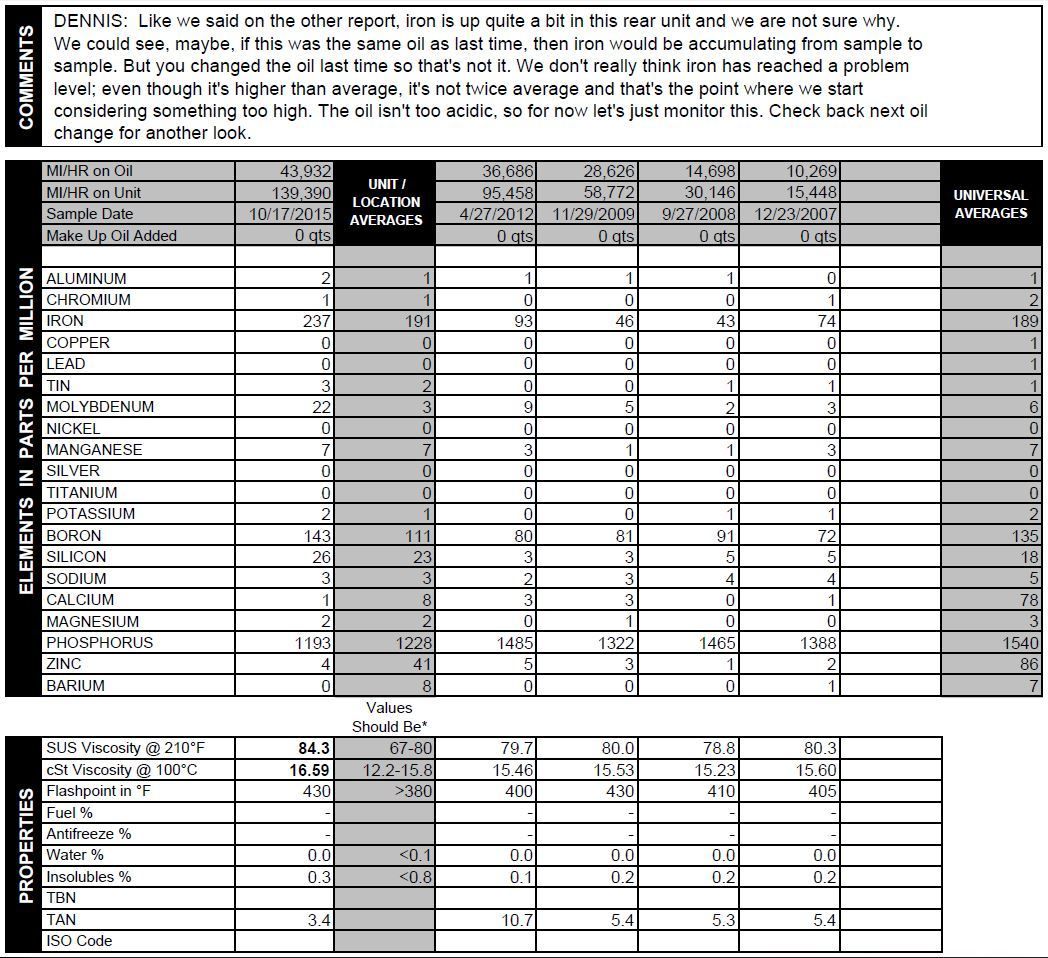Originally Posted By: btanchors
zeng - OK, I agree and concur with all your comments above, except use of 75W-90 leading to whining sound being generated.
At operating temperature, 75W-90 and SAE 90 are the same weight.
You are quite right, but there is a difference , of significance , btanchors.
Let's assume the differential gear oil operating temperature is 60 C.
a)Select a typical Esso Gear Oil ST 90 :KV40 at 198 cSt; KV100 at 17.5 cSt ---- it's operating viscosity is
71.5 cSt.
b)Next select a typical Mobil 1 Syn Gear Lube LS 75W-90 :KV40 at 106 cSt; KV100 at 15.2------it's operating viscosity is
47.8 cSt.
IMO, this 71.5 cSt operating viscosity oil( inspite of being a regular mineral oil), offers better wear protection than a 47.8 cSt oil.
Originally Posted By: btanchors
At cold temps, the 75W-90 would be thinner than the SAE 90, but both would be much thicker then they are at operating temperature.
You are absolutely right, at cold temperature, 75W90 is well suited to say, -25C. However minimum ambient for SAE90 is around 0 C. So if your winter ambient is below 0 C, you may adopt the next option of 75W-140 synthetic.
Originally Posted By: btanchors
So I do not see how use of 75W-90 would lead to whining.
Prolong use of sub-optimal operating viscosity oils, in relation to a thicker oil at operating temperature , would generate higher quantum of gear tooth sliding metal wear , leading to increased gear backlash and increased heat... increased temperature ............ eventually gear whine after say , 10 years or so.
Originally Posted By: btanchors
You did not say anything regarding the much larger amount of silicon in this latest UOA - you don't think this caused the larger amount of iron?Thanks for your comments.
The portions of silicon arising out of dirt/sand contamination would aggravate abrasive wear on gear tooth.It's something that ought to be contained. IME, sub-optimal operating viscosity of 75W-90 in this particular case, is the major culprit.
Correct me if I'm wrong.



